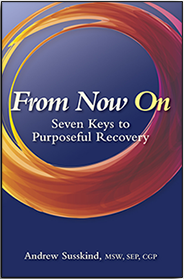Action Step #1: Ask yourself the following question: “What matters most to me?” which is a shortcut to clarifying your values. For example, my top answers are relationships, love and ease. It took me several years to understand these core values, and now . . .
Continue reading...Emotions
Cultivating Contentment (Part 1)
I think I’ve always struggled with happiness although I do have some fond memories with neighborhood friends when I was a kid. On the inside of my home I saw a lot of suffering that showed up as competition, criticism and envy, just to name a few painful ingredients. My childhood was not a happy time of my life, but somehow I managed to shut the door to my bedroom and create a mini-sanctuary equipped with . . .
Continue reading...The Rhythm Within (Part 2)
When it comes to slowing down and listening more intently to the rhythm within, there is no one formula. It will take some trial and error to see what works best for you. Here are some possibilities you may consider: . . .
Continue reading...The Rhythm Within (Part 1)
Having grown up in the 70s in a turbulent family, I found creative ways to cope with the chaos of our home. First of all, I worked really hard to make good friends. As a matter of fact, I was adopted by at least four families before the age of 12. I also tried to be as busy as possible and do all of my homework and my chores. Except for stopping long enough to watch the innovative sitcoms of the 70s such as All in the Family, M.A.S.H. and the Mary Tyler Moore Show, I was always on the go. Doing, achieving and perfecting became my survival strategies to avoid the sadness, hurt and anger within me. If I did enough, achieved enough and perfected enough, somehow . . .
Continue reading...The Other Side of Narcissism (Part 2)
Distinguish between healthier narcissism and malignant narcissism. Healthier narcissism will generally show up when you’re feeling more emotionally sober, confident and connected to others. Malignant forms of narcissism show up as chronic relationship problems, blaming others and lack of empathy or attunement. Because we all possess . . .
Continue reading...The Other Side of Narcissism (Part 1)
Narcissism is generally seen as a negative trait, but in this article we will explore the positive side of it. When babies are born, they imagine that the world revolves around them, and if they have an immediate need (e.g. food, touch, change of diaper), they believe that someone will take care of their needs quickly. Unfortunately, the fantasy that your parent (or caregiver) will respond to you in just the right way, at just the right time, at just the right temperature, sets you up . . .
Continue reading...Turning Down the Volume on Shame:
An Action Plan (Part 2)
Welcome back to our exploration of shame. Now that we’ve started to identify and name it, how do you build shame resiliency? Action Step #1: Distinguish between healthier shame and toxic shame. Remember that healthier shame lets you know if you’ve crossed boundaries or done something that is not in your integrity.
Continue reading...Turning Down the Volume on Shame:
An Action Plan (Part 1)
Shame is epidemic, but that’s not always a bad thing. Shame is one of your primary emotions and part of the human condition, but it can be paralyzing and profoundly isolating if not explored and processed. It often shows up in the self-attacking language you sometimes use against yourself such as . . .
Continue reading...


